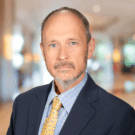If liability insurers and defendants want to turn the tide of social inflation, they need to come together as teammates with a solid game plan, a reinsurance claims executive said recently.
Executive Summary
In a series of articles, a reinsurance claims manager, an insurance research analyst, a litigation consultancy and reinsurance company chief executives discuss the drivers of social inflation, concluding that the trajectory of liability damages will continue spiraling upward post-COVID and recommend defense and insurer strategies for change. They advise strategies that focus on presenting better stories paying attention to confirmation biases, investing in more witness preparation, offering damage amounts even if the defendant has no liability and working to improve corporate images.(Part 1 of a Series)
Agreeing with other experts speaking at a reinsurance seminar that the pandemic may actually increase levels of social inflation that were already impacting U.S. casualty insurers and reinsurers prior to the outbreak of COVID-19, Dana Franzetti, a claims manager in Swiss Re’s U.S. Property & Casualty Claims department, described how plaintiffs lawyers decided to coordinate rather than compete with one another about a decade ago to counteract the impacts of tort reform.
“Plaintiffs attorneys will text each other when they have an opening or a closing argument to give in a case—and they’ll show up for each other. They will show up and, much like a wedding, will sit on the side of the plaintiff in street clothes,” she said. “It sends a subliminal message to the jury that this is an important case and that we sit behind the plaintiff,” she said.
Speaking during a session of the Casualty Actuarial Society Seminar on Reinsurance in early June, Franzetti, a former insurance defense attorney, revealed a host of other inside baseball-type maneuvers that she has learned are contributing to social inflation—the pattern of higher jury verdicts and settlements that have fueled higher insurance losses in recent years.
Presenting a series of tips from plaintiffs lawyers playbooks—several from actual books like “Reptile: The 2009 Manual of the Plaintiffs Revolution,” by David Ball and Don Keenan, and “Running with the Bulls: How to Win Top-Dollar Settlements” by Nicholas Rowley—Franzetti said that plaintiffs lawyers, “figuratively speaking, ‘unionized.’ They became highly coordinated. They realized that they shouldn’t be jealous of each other’s successes because your success is a new floor for me.”
“We need to stick together and stand strong if we want to be more powerful than our opponents,” she said, quoting from Rowley’s book.
“In order to share the strategy, the plaintiffs lawyers hold many offsite meetings. They circulate how-to memos among themselves, and they have dedicated websites in which they share experiences,” Franzetti told the actuaries. “And make no mistake, they are very specific in these forums: They name names. They talk about specific defense attorneys, claims adjusters, experts that they’ve deposed.”
She noted that when they take the testimony of an expert, for example, “within minutes of them receiving that transcript, they circulate it among themselves. It serves as a playbook. So the next time one of them goes up against this expert, they already have a guide as to how to attack them.”
At one point during her presentation, Franzetti contrasted the central topics of plaintiffs lawyer training resources against those of the defense bar. On the defense side, she listed items like “motion practice” and “specific laws.” On the plaintiffs side, she listed “communication” and “psychology” and “money.”
“They practice talking about money,” she said, later describing the plaintiff bar’s specific focus on itemized noneconomic damages. “They know that these are the types of damages from which nuclear verdicts are born,” Franzetti said. “Contrary to popular belief, they don’t just put up one large number and say, ‘This is what we want for pain or suffering.’ They actually break it down because they’re trying to…anchor the jury and give them some sort of rationale” for awarding large amounts, she said, displaying a slide that itemized “pain” at $10,000 per month (past and future), “suffering” at $1,000 per month, and similar amounts for separate items of “loss of enjoyment,” “humiliation” and “loss of consortium.”
On the other side of the courtroom, defense lawyers are taught that the defense should never “give a number” if they believe there is no liability. Franzetti said that’s a part of the defense lawyer playbook that’s ripe for change. Citing research published in the Iowa Law Review in 2016, she noted when defendants present their own lower damage figure, this results in no-liability or lower verdicts. (Countering the Plaintiff’s Anchor: Jury Simulations to Evaluate Damages Arguments by John Campbell, Bernard Chao, Christopher Robertson, David V. Yokum, Iowa Law Review, 2016)
Funding Sources
Referring to a different “money” topic—the question of where plaintiffs firms get the money to pursue “nuclear” verdicts—Franzetti said that while very successful ones have their own monetary resources, litigation funding is increasingly an answer for smaller firms.
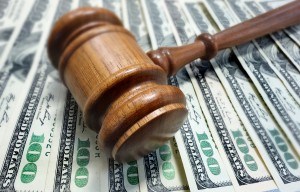 During the same seminar session, William Wilt, a Fellow of the Casualty Actuarial Society and the president of Assured Research LLC, a research and advisory firm focused exclusively on the P/C insurance industry, described three types of litigation financing: commercial litigation finance, consumer litigation finance and specialty finance firms. “What I’ve come to believe is that it’s this third type of litigation finance firm that is greasing the wheels for what we all in the insurance world think of as social inflation,” Wilt said.
During the same seminar session, William Wilt, a Fellow of the Casualty Actuarial Society and the president of Assured Research LLC, a research and advisory firm focused exclusively on the P/C insurance industry, described three types of litigation financing: commercial litigation finance, consumer litigation finance and specialty finance firms. “What I’ve come to believe is that it’s this third type of litigation finance firm that is greasing the wheels for what we all in the insurance world think of as social inflation,” Wilt said.
While many insurers are most familiar with commercial litigation finance, often associated with the name of a publicly traded company called Burford Capital, Wilt said their focus is “esoteric business-to-business related litigation,” like intellectual property disputes and contract enforcement. At the other end of the spectrum, consumer litigation finance firms “lend really small amounts of money, typically $4,000 and less, [to] people, claimants who are involved in litigation. The money is used for their daily living expenses.” Here, Wilt referred to billboard advertising of a firm known a “LawCash.”

“If I had to handicap it, social inflation is more likely to get worse than it is to get better.”
William Wilt, Assured Research
Giving an example of a different litigation finance firm called Advocate Capital, Wilt said he believes that the firm and its counterparts are more likely driving the trends in commercial auto and general liability claims that casualty insurers talk about. Directing actuaries in the virtual audience to visit the advocatecapital.com site, he reported the words of a website video voiceover: “‘We’re a game changer for contingency fee law firms. We help give them the confidence to be able to go into negotiations and reject low settlement offers.'”
Wilt said: “The way I think of it is that they provide the working capital for law firms that frankly they didn’t have 10, 15 or 20 years ago when they were all partnership-based and they paid out through bonuses at the end of the year…That’s all changed,” he said.
Pandemic Pause Not Reversal
Still, like other businesses around the country, the pandemic has meant that law firms are now engaging in layoffs and furloughs and pay cuts. And courts aren’t all open. “It sure seems like social inflation as we traditionally think of it, or as we might have been discussing it in late 2019 or in the first couple months of 2020, really is pausing,” Wilt said. He noted that the number of new legal matters from the beginning of the year through the end of April was down 30 percent (according to a report by practice management software company Clio).
Franzetti and session moderator Jeff Dollinger, worldwide chief non-life reserving actuary for Partner Re, both said that they have anecdotal evidence of a recent uptick in settlements. Franzetti speculated that in some instances this is happening as defendants analyze options against the prospect of nuclear verdicts. Other times, plaintiffs attorneys with current cash flow issues may just be more receptive.
In Wilt’s view, any pause in social inflation is temporary. Supporting that idea, he showed a graph displaying levels of federal tort cases during periods of recession—dating back to one in the early 1970s all the way up to the most recent one during the global financial crisis in 2007-3009. The analysis shows a very consistent pattern of tort case spikes in the years after a recession, Wilt said. “We’re in one now,” he added.(Reinsurance company executives speaking at a separate session during the seminar expressed similar views. See related article, “What Reinsurance Execs Say About Social Inflation“)
Are Jurors Still Angry or Sympathetic?
During his presentation of statistics and historical trends, Wilt showed noticeable jolts in the numbers of tort cases, costs of single-fatality cases, medical malpractice verdicts and employment cases all starting to emerge around 2015-2016 time frame. He also revealed longer-term trends of wealth inequality that became evident in the mid-1980s. That’s when things started to get better at a faster rate for those with income levels in the top 10 percent compared to those in the bottom 90 percent, he said, displaying two clearly diverging lines tracking income for those groups year by year.
More divergence: Wages gradually drifting down while corporate profits as a percentage of national income—although volatile—trended in the opposite upward direction.
“If I had to handicap it, social inflation is more likely to get worse than it is to get better,” Wilt concluded, referencing the historical post-recession spikes in federal tort actions, the fact that “inequality is getting worse not better,” and also referencing some remarks that W.R. Berkley’s executive chair William R. Berkley made about social inflation in October 2019 to bring everything together. “People are unhappy and angry, and that resentment is coming through in court decisions,” Berkley said, simply attributing the trends to a desire by those in the lower wealth tiers of Wilt’s graphs to punish the others.
Wilt did note that when Berkley made his comments, the chairman also said that he expected things to shake out in a three-year time frame. “The good news is that he was making those comments, not in the first or second inning of this game, but more [toward] the middle innings,” Wilt said, referring again to 2015-2017 inflection points in his litigation cost graphs.
Separately, in a research note he published in late June, Wilt offered more glimmers of hope, summarizing some insights he gathered from a white paper published by Boesen Litigation Consulting, a firm specializing in jury psychology. While the consulting firm predicts that short-term impacts of the health and economic crisis “will be increased volatility and uncertainty in jury verdicts,” the firm also predicts that defendants will win more cases going forward, Wilt noted, referencing the white paper.
“We expect more defense verdicts, as jurors become more forgiving of defendants they believe were victims of circumstance (like themselves),” the white paper says, noting that the consultants also expect larger verdicts for plaintiffs when plaintiffs do prevail—”as jurors look to punish even more severely anyone who failed in a duty to make expected preparations to protect others.”
Communication and Psychology: The Story Matters
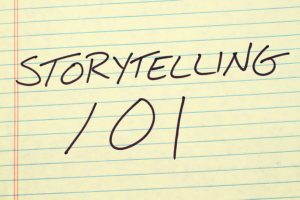 According to the Boesen team, in litigation brought before and after the pandemic, stories are at the heart of every jury decision—with perceived victims, villains and heroes of the stories determining litigation outcomes. Before the pandemic, “Wall Street vs. Main Street” narratives were driving higher plaintiff verdicts, they note. Given the shared experiences we all face now is weighing the risks of coming out of quarantine against the rewards of socializing and working again, “the concept of a thoughtful balancing of risks and rewards is the natural counter to the standard plaintiff theme of a defendant prioritizing profits over safety,” they note, urging risk managers and claims professionals to begin to shape new narratives.
According to the Boesen team, in litigation brought before and after the pandemic, stories are at the heart of every jury decision—with perceived victims, villains and heroes of the stories determining litigation outcomes. Before the pandemic, “Wall Street vs. Main Street” narratives were driving higher plaintiff verdicts, they note. Given the shared experiences we all face now is weighing the risks of coming out of quarantine against the rewards of socializing and working again, “the concept of a thoughtful balancing of risks and rewards is the natural counter to the standard plaintiff theme of a defendant prioritizing profits over safety,” they note, urging risk managers and claims professionals to begin to shape new narratives.
The white paper offers some examples of how stories about first responders, essential workers, medical professionals, employers and healthcare administrators are being written by their crisis actions, and warns against defense strategies that hinge on the testimony of scientific and government experts going forward. “Even the most basic questions such as whether or not it is helpful or harmful to wear masks seem to be beyond any authority’s ability to answer with certainty. These experiences could take a devastating toll on jurors’ trust in opinions of expert witnesses in general.”
At the CAS meeting, Franzetti highlighted “the story” as well, explaining that this is the “very first thing” plaintiffs attorneys look at as they sift through cases to decide which have the potential to go nuclear. “What is the story that they are going to tell? And are they going to be able to tell it in a way where the jury becomes angry at the defendant?”
“They tell it multiple times. They practice it. They have in-house mock juries” to craft and refine stories, she said, later explaining how the facets of plaintiff stories that trigger purely emotional reactions in jurors as they paint pictures of unsafe practices at defendant companies that caused harm. Making the case about lack of safety “instills in the jurors that it’s up to them to protect society,” Franzetti said.
She noted that plaintiffs firms also “really get to know their own clients.” As an example, some of their training memos recommend dining with clients and going to their children’s events. “They want to form an emotional connection [with] their client because not only does it engender trust from their client, but they know that that emotional connection comes through when they tell a story [and] present it to the jury,” she said.
She went on to give even more specifics from the plaintiffs bar playbook and suggested defense and insurance plays that could counter them in the future. (See related article, “Managing Social Inflation: What Should Be In The Defense Playbook The Defense Playbook“)


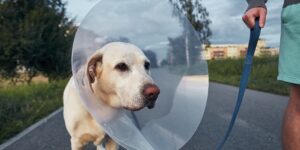

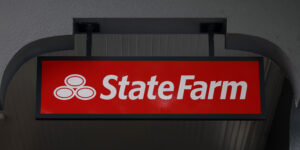
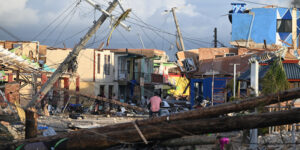















 Why Reciprocal Insurance Exchanges Are Back in Fashion
Why Reciprocal Insurance Exchanges Are Back in Fashion  How One MGU Grew Fivefold When Capacity Fled Cat-Prone Property Markets
How One MGU Grew Fivefold When Capacity Fled Cat-Prone Property Markets  Dozens of State Attorneys General Urge Congress Not to Block AI Laws
Dozens of State Attorneys General Urge Congress Not to Block AI Laws  6 Warning Signs for Insurers: How to Anticipate, Respond to Pipe Freezes
6 Warning Signs for Insurers: How to Anticipate, Respond to Pipe Freezes 













